Recent Why SERVPRO Posts
3 Facts About Mold
1/26/2022 (Permalink)
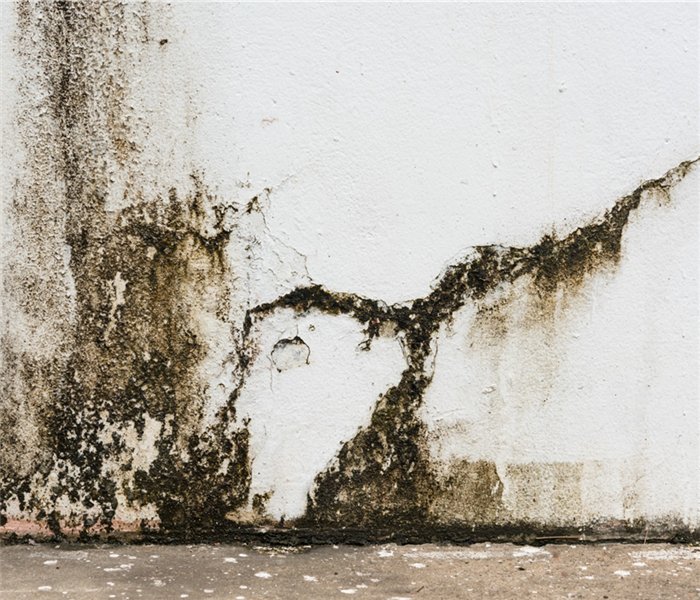 Black mold can grow just about anywhere.
Black mold can grow just about anywhere.
Black mold is the boogeyman of many a homeowner. We know it’s unpleasant to look at, but just how much do you know about the real threat mold poses in your Lascassas, TN, home? Read up on these surprising facts about mold to get a real handle on this household menace.
What is Mold Anyway?
Found throughout our environment, mold is a fungus comprised of small organisms. It thrives in moist, dark place, replicating via lightweight spores that are easily dispersed through the air. In homes, mold tends to thrive in:
- Basements
- Crawl spaces
- Bathrooms
- Under sink areas
Mold Isn’t Just Black
While the dark kind is most sinister, mold can come in orange, green, purple and even pink or white. This all depends on the organisms making up the mold and that plays a big part in what you do to clean it up. Whatever the color, mold is not something you should ignore in your home.
Mold Is Not Mildew
While the terms mold and mildew are often used together, these are two different things. They’re both fungus. However, while mildew only grows on surfaces, mold has roots that can take hold where the eye can’t see. This is one of the top reasons that it’s so hard to get rid of it - the leftover roots mean it can re-establish itself easily.
You Can’t Get Rid of All Mold Spores
Despite advances in mold cleanup, there’s no true, practical way to eradicate all mold spores in an indoor environment. They’re too light and too numerous. Instead, the answer to preventing black mold growth is controlling moisture. That means staying on top of leaks and drips, cleaning wet materials and preventing condensation.
Black mold can grow just about anywhere, feeding on wood, paper and even carpet in your home. If you’re tired of fighting the fungus, connect with a mold remediation expert to explore your options.
You’ll Find Mold in These Six Surprising Places
10/27/2021 (Permalink)
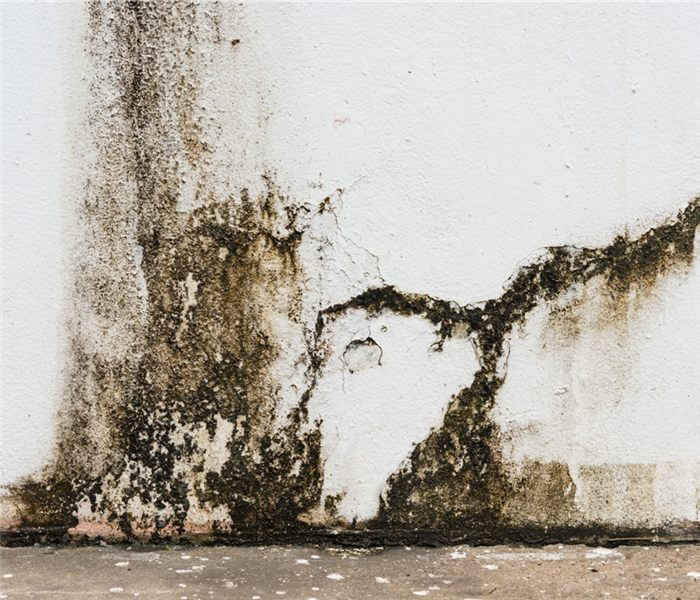 Mold damage in a Milton, TN home.
Mold damage in a Milton, TN home.
Six Places Where You Might Find Mold
You may think you’ve ferreted out all the mold in your Milton, TN residence, but the odds are you don’t even know all the places to start looking for mold growth in your home. Mold isn’t just a surface issue; did you know if you have mold on your walls, it’s likely you also have mold behind your walls as well? And not just there. Let’s take a look at six places where you might find mold, as long as you know where to look.
1. Behind your walls. Moldy drywall can leave your entire house smelling musty and can let mold spread unchecked and out of sight.
2. Underneath your carpeting. If moisture gets trapped under your carpet, it’s a perfect space for mold to grow – enclosed, dark, with pockets of wetness for it to feed on. It will also feed on organic matter such as carpet glue and carpet fiber.
3. Inside the wood of your floors. Because mold feeds on organic matter, older wood floors can be ripe for this. Mold on wood happens when wood gets old and begins to soften with frequent water absorption.
4. Under sinks. Drips and leaks can slowly accumulate under sinks until you don’t even think to check in this out-of-the-way place when mold growth can be slow – but once it starts, it’s hard to get rid of.
5. Underneath laminate flooring. Laminate flooring has many of the same problems as carpeting, and once moisture is trapped underneath, mold will happily devour the glue on the laminate.
6. Inside your appliances. Refrigerators and air conditioners are the worst culprits when they can often accumulate condensation that feeds mold. Any appliance that attracts condensation can grow mold, though.
Sometimes, you may not be able to identify mold growth in small spaces or have the tools to check for mold underneath flooring. That’s when a mold remediation specialist can come in handy – to help you get your mold problem under control.
10 Facts About Mold
9/14/2021 (Permalink)
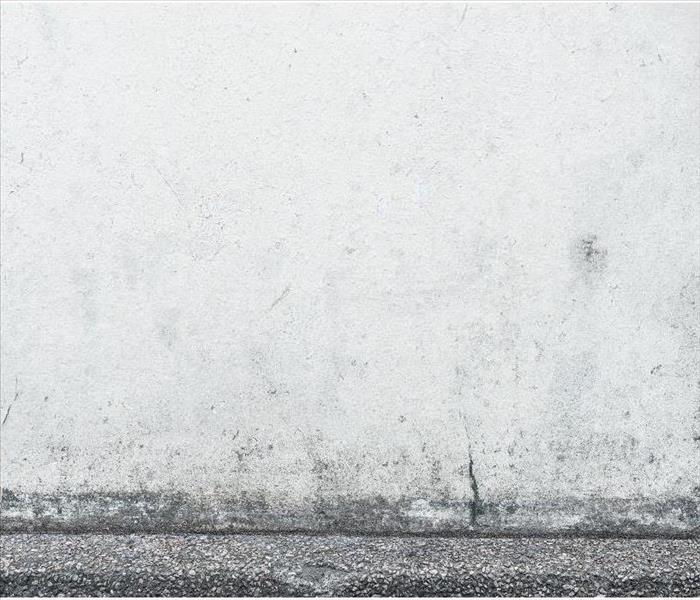 Whether the mold growth in your home is the result of water damage or humidity, knowing how to resolve the problem and prevent it is important.
Whether the mold growth in your home is the result of water damage or humidity, knowing how to resolve the problem and prevent it is important.
Many homeowners will experience mold damage at some point. If you think there is mold growth in your home in Blackman, TN, it may be helpful to understand a few facts about mold. There is a difference between mold being present and mold being a problem.
1. Mold is all around. Mold only becomes a problem when it is drawn to a surface to land and thrive on.
2. Mold likes moisture. Mold needs water to grow rapidly. Areas with high humidity often see more frequent mold growth.
3. Mold smells musty. One of the first signs that you have a mold problem is that you will smell a dank, stale odor.
4. Mildew is not mold. What most people think of as mildew in their bathroom is more likely a type of mold. Mildew mainly grows on plants, whereas mold tends to grow on surfaces.
5. Bleach doesn't kill mold. Because bleach is mostly water, it can actually increase mold growth. Rather than killing it, it merely turns it white.
6. Mold is airborne but doesn't stay that way. Mold travels indoors by hitching a ride on clothes, shoes, bags, and pets.
7. Mold is diverse. There are over 10,000 species of mold, and they come in a variety of colors and textures. Only a handful of species are common indoors.
8. Mold happens quickly. Mold can start to grow in as little as 24 hours after excess moisture has entered the environment.
9. Test kits aren't helpful. Because DIY test kits report the presence of mold rather than the excess of it, they aren't helpful in detecting a problem. A test by a certified industrial hygienist is necessary.
10. Mitigation is for the experts. While you may be able to take care of a small patch of mold in your home, large problems require professional mitigation so that they don't get bigger or return.
Whether the mold growth in your home is the result of water damage or humidity, knowing how to resolve the problem and prevent it is important. Armed with these facts, you are more likely to notice signs of mold.
How To Check a House for Mold
8/23/2021 (Permalink)
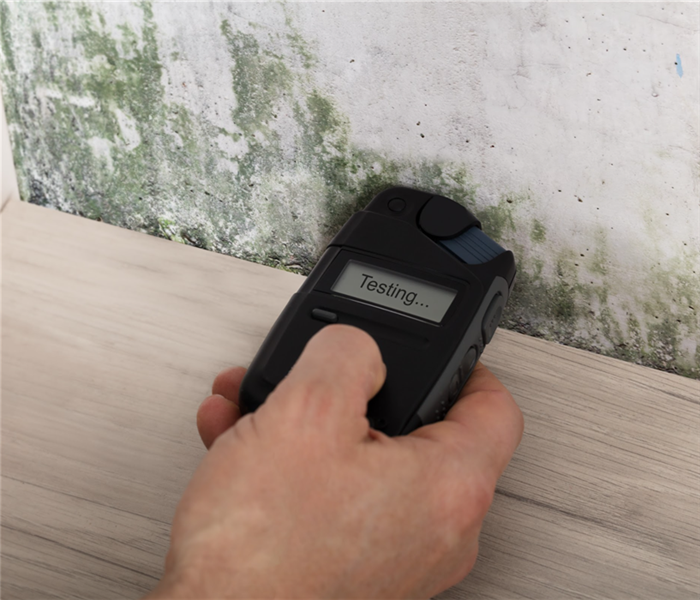 Mold testing
Mold testing
How to Examine a House for Mold
There are a number of situations in which you may want to check a house for mold growth. For example, if you’re thinking of buying a house in Milton, TN, or if you’ve experienced a significant water event in your own home. If a thorough visual inspection of the house, including the attic, closets, basement, or crawlspace, doesn’t turn up mold but you still suspect there may be a problem, you may want to call a certified indoor environmental specialist.
If the house has any of these issues, it may have a hidden mold problem:
- A musty or moldy smell
- Past flooding
- Leaks
- Humidity over 60 percent
What Is a Mold Test?
When you hire indoor environmental specialists, they will conduct a mold test. There are air tests, surface tests and bulk tests. A spore trap is a device with a sticky surface inside. When air passes through it, any mold spores in the air stick to the surface. When a dye is applied, it stains the mold spores so the tester can determine the number and types of mold spores present in the air. If your home has a higher spore count than the air outside, there’s a good chance you have hidden mold.
The surface test works in a similar way. An adhesive strip is applied to surfaces and then analyzed for mold spores. A bulk test actually removes suspect material from your home - for example, drywall damaged in a flood - and tests it for mold.
What Is a Moisture Assessment?
A qualified indoor environmental specialist in Milton, TN, can also perform a moisture assessment. Not only can this pinpoint the locations of hidden mold growth, but it can also locate the source of moisture problems that foster molds, like broken water pipes, leaking roofs, or areas of poor ventilation. These are carried out with moisture meters, infrared imaging and careful tracking of humidity, temperature and dew point.
If you suspect a mold problem but you can’t see one, hiring a professional to carry out a mold test and moisture assessment can give you the peace of mind you’re looking for.
5 Tips To Prevent Mold Growth in Your Bathroom
6/14/2021 (Permalink)
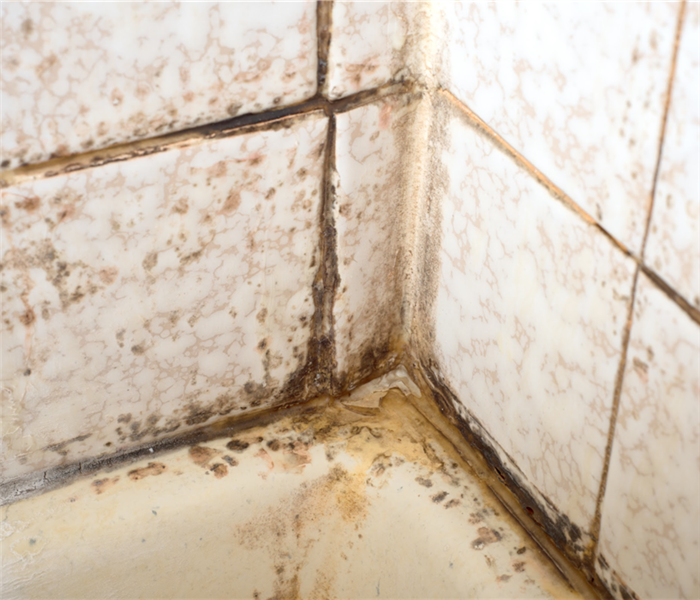 Mold damage in the bathroom.
Mold damage in the bathroom.
Keeping Your Bathroom Dry and Mold - Free
Can homeowners in La Vergne, TN, avoid unpleasant water damage and fungal growth in the bathroom? This space is a naturally moist location, fraught with humidity and pipes. Because the room is likely to develop this hazard, residents should take a proactive approach, consistently minimizing lingering water exposure. The following are five tips for keeping your bathroom dry and mold-free.
1. Use the Exhaust Systems
Inside your bathroom should be fans. These devices extract humidity from the air. This dampness, if allowed to linger, spawn mold. It's best to keep them on both during and after your shower or bath. Plan for about 30 minutes.
2. Dry Off Tile
Mold growth sets in when water meets fungus spores. These decomposing microbes live naturally within the house and yard. They become problematic when dampness triggers reproduction. At that point, the organism starts to feast on organic matter such as wood and insulation. Reduce the water sticking to your shower and tub by wiping it down after each use. Keep a squeegee in the shower stall. Grab it at the end.
3. Invest in Moisture-Absorbing Products
Some rooms are harder to keep dry. To stop water damage, place moisture-absorbing products in those sections. Consider under the sinks or within the toilet room.
4. Check Plumbing
For effective mold prevention, inspect the pipelines every so often. Open up the vanity doors. See if any leaks have started. Be cautious if rust or corrosion is present. Fix these concerns immediately. If you observe staining, a strange odor or discoloration, contact a mold remediation company for inspection.
5. Grout and Caulk Yearly
Don't let water penetrate through the tile. Be sure to seal it, maintaining a waterproof barrier. If dampness breaks through, it could begin a hidden mold colony. You may not know of the infestation until it has become severe.
Water damage isn't just excess fluid. It's the beginning of a mold infestation. To avoid this complication, concentrate on catching difficulties early and maintaining a dry environment.
3 Mold Remediation Steps
12/8/2020 (Permalink)
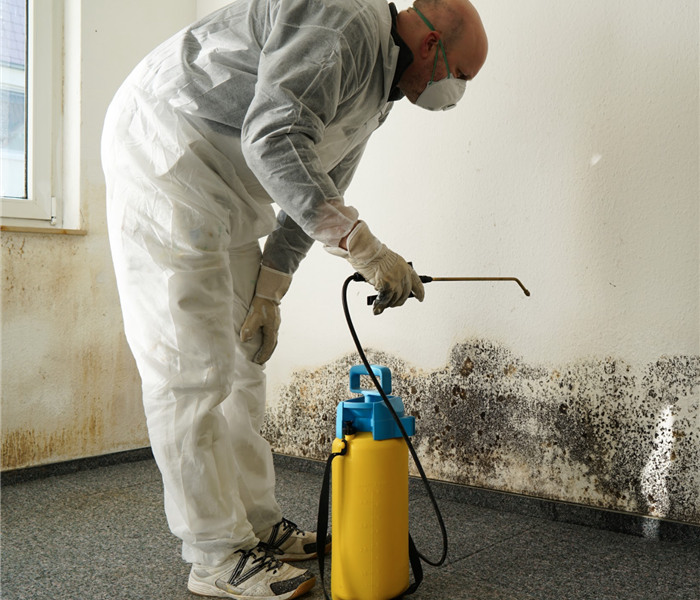 Mold remediation in Murfreesboro, TN
Mold remediation in Murfreesboro, TN
Mold Remediation Steps
If you have discovered black mold in your building, prompt mold remediation is key to mitigating your damages and avoiding future problems. You can help make the process go more smoothly by familiarizing yourself with the steps involved.
1. Follow the Moisture
Mold can be difficult to track down because it often grows in places you can not see. One way professional mold remediation companies discover all of the areas of mold growth in a building is to look for the sources of moisture that fuel its growth. By locating moisture sources and tracing them to their point of origin, mold cleanup professionals can ensure all existing mold is removed and prevent future mold problems.
2. Make a Plan
Once all of the black mold has been located, your mold removal team will document it with writing, photos and video and then use that documentation to create a removal plan. The plan should include information such as when work is expected to start and be completed, who will be doing what, any testing that is needed and whether you will need to keep employees and clients out of the building while the work is being done.
3. Remediate Mold Contamination
The next step after creating the plan is to execute it. Mold professionals in Murfreesboro, TN, will work to eliminate all of the existing mold in your building while maintaining safety measures to avoid exposure. The process will involve isolating the contaminated area, suppressing dust, removing damaged materials, cleaning, testing and drying. You may need additional assistance to repair any leaks and replace damaged materials, such as drywall, furniture or ceiling tiles.
Black mold remediation is a multi-step process that involves assessment, planning and execution. Your professional mold removal team will have the experience and equipment necessary to safely locate and combat your mold problem and prevent additional damage and future problems.
3 Ways Renters Insurance Covers Mold Damage
11/24/2020 (Permalink)
 Renters insurance can protect it against the ravages of mold damage after a flood
Renters insurance can protect it against the ravages of mold damage after a flood
3 Ways Renters Insurance Covers Mold Damage
When your Rockvale, TN, rented property suffers water damage, you may wonder if your rental insurance covers costs for secondary damage, such as mold growth. You may encounter different types of fungi growth after a flood, many of which can take hold as soon as 24 hours after a flood. Understanding coverage circumstances for such an issue may help you maintain peace of mind in the wake of mold and water events.
1. Internal Flooding
Indoor flooding, such as water from burst pipes, leaking appliances or water lines and malfunctioning air conditioning units, can all cause mold growth soon after. Even if you dry the area with fans or towels, mold damage might still occur under cabinets or carpeting, which makes it difficult to spot. You may want to report the presence of mold to your insurance representative and your landlord as soon as you discover it.
2. Water Heater Damage
Rental insurance is likely to cover any mold problems caused by your rented apartment’s water heater. These appliances can crack and leak on occasion, which may cause mold growth at the source. Over time, spores become airborne and can travel to other parts of your home and find warm, moist places to grow anew. You can ask your insurance representative about the extent of your coverage for this circumstance.
3. Property Damage
Furniture, clothing and other personal belongings can be severely damaged by mold growth. A mold removal and remediation service may be able to restore some items, and your insurance will probably cover the cost. However, because insurance companies and policies vary, speak with your local agent before you commit to any type of restorations.
Rental insurance for your Rockvale, TN, apartment or other rental property can protect it against the ravages of mold damage after a flood. The better you understand your coverage, the faster you may be able to act when these problems arise.
3 Steps to Ward off Mold in the Wake of Water Damage
9/30/2020 (Permalink)
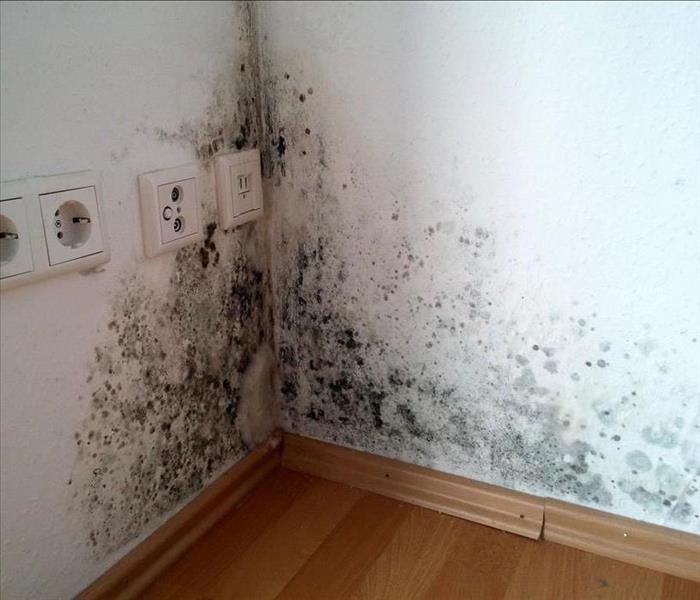 Mold damage in Blackman, TN
Mold damage in Blackman, TN
Three Simple Mold Prevention Steps
Has your Blackman, TN, home been flooded, or has a pipe burst? The water damage you're facing now might feel overwhelming, but if you don't take these crucial precautions, you'll have the nightmare of mold growth on your hands soon enough. Mold is a nasty fungus that requires professional mold expertise to remove and can grow on almost any moist surface, including:
- Ceilings and walls
- Wooden floors
- Carpeting and rugs
- Curtains
- Upholstery
You'll be thanking yourself later for taking these three simple mold prevention steps.
1. Sop Up the Water
This one might seem like a no-brainer, but you'd be surprised how often homeowners waste precious time before cleaning up the flooded area. The first step in mold prevention is to collect all the surface water, using mops, rags, and if possible, a wet vacuum. If you let the water stand, mold is almost certain to crop up in the surrounding areas on top of the worsened water damage.
2. Dehumidify for Days
No mop or wet vacuum can sop up every bit of water, as it's sure to have sunk deeper into the nooks and crannies of the surface. As soon as the surface water is taken care of, crank up your heat or AC and set up a dehumidifier. If you're worried about whether these measures are doing the job, pop over to your local home goods store and purchase a humidity meter.
3. Ask for Help
From here, you may feel safe from mold, but this is a dangerous misconception. Sometimes mold is only identifiable through professional analysis, especially in the early stages. If you can catch the mold growth before it's even spread far enough for you to see it, your mold remediation process will be a piece of cake!
Water damage is a disaster on its own, so don't let it evolve into a mold growth as well.
Mold Standards and the 3 Institutions That Create Them
8/19/2020 (Permalink)
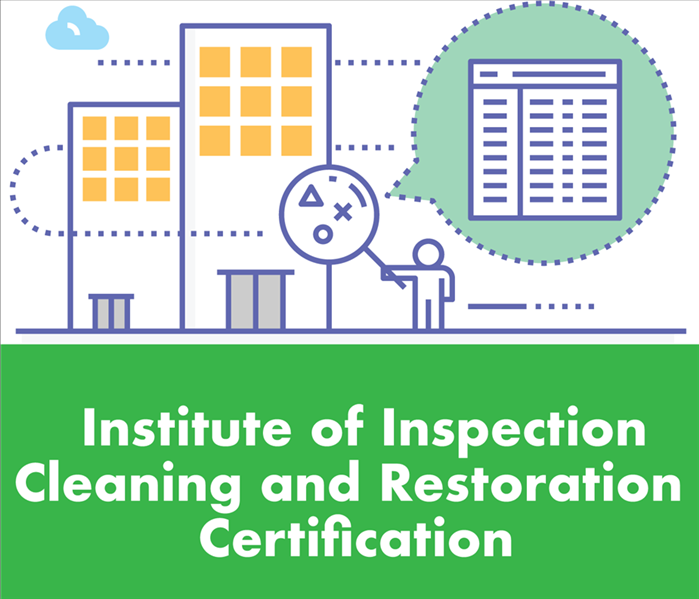 The IICRC is a nonprofit and recognized certifying body for the remediation and restoration industry
The IICRC is a nonprofit and recognized certifying body for the remediation and restoration industry
Mold Standards
When managing a commercial facility, you likely get used to complying with federal and state regulations, but that does not mean you are familiar with all rules, especially when it comes to disaster mitigation. Too many businesses and property owners assume that disaster cleanup, like mold clean up, is easy and not guided by governmental or professional bodies, but that is an incorrect assumption. There are mold standards, and there are at least three bodies that dictate the processes for removal and safety.
IICRC
OSHA
EPA
IICRC
The Institute of Inspection, Cleaning and Restoration is a nonprofit and recognized certifying body for the remediation and restoration industry. Before hiring any mold remediation company in Eagleville, TN, make sure they hold an IICRC certification. Having the IICRC seal means that the company is aware of the mold standards necessary for restoring your facility in the event of a black mold disaster, giving you the confidence to leave the restoration to that business.
OSHA
The Occupational Safety and Health Administration is a governmental body dedicated to the safety of American workers. OSHA likely has several rules regarding employees working around or near potentially hazardous materials. Therefore, instead of putting your workforce at risk, contact a remediation specialist who is trained in mold removal.
EPA
The Environmental Protection Agency is the federal institution responsible for regulating environmental safety standards for businesses, which includes the disposal of hazardous waste. You cannot merely bag up the mold and throw it in a garbage can. Instead of risking fines from the EPA, call a mold removal expert who is certified and licensed in the handling of the materials.
It is always tempting to save a buck, especially if your business is strapped for working capital. However, when dealing with mold remediation, it is better to call on a professional who understands mold standards, then risk violating OSHA or EPA regulations. Make sure that whoever you call has an IICRC certification.
The Important Step of Ridding a Home of Mold Odor
7/29/2020 (Permalink)
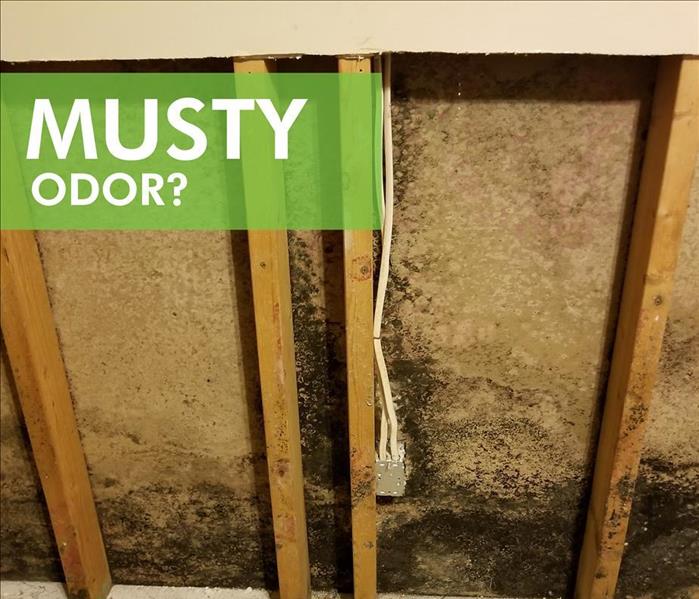 Mold produces an unpleasant odor
Mold produces an unpleasant odor
Mold in a home causes a number of problems for those living there. When mold forms into colonies it has a dark green or black appearance that often looks somewhat slimy or even fuzzy. Over time, the mold can break down materials and penetrate deeply into porous items such as clothing, carpeting, and curtains. It also produces a stale, unpleasant odor. The odor can come from a mycotoxin present in many types of mold. To rid a home of high levels of mold, a local mold mitigation franchise in La Vergne, TN, is the most effective route to take.
Treating the Musty Odor
Decreasing the high levels of mold in a home will also treat the odors associated with the fungus. This is done through a multiple-step program that can take several days to complete and which will also treat the mycotoxin levels as well. The main steps in the process are as follows:
- Inspection and assessment
- Testing
- Mold containment
- Air filtration
- Cleaning and sanitizing
- Restoration
Highly-trained and certified technicians follow the best practices set forth by the cleaning industry. An important part of any mold remediation job is finding and removing any excess moisture in a home. Rooms that register higher than 45 percent humidity are susceptible to mold growth. Microscopic mold spores are basically always present in most homes though at low levels.
Finishing the Remediation
Each job is different. Not all molds contain a mycotoxin. This depends on the type of mold and on the substance the mold is growing on. The longer the mold has been present and the more widespread the infestation is the more involved the restoration will be. Sometimes drywall needs to be removed and replaced with new materials. Other times a thorough cleaning and a fresh coat of paint will be satisfactory. The ultimate goal of mold cleanup is to mitigate mold damage, eliminate odors and restore a home to its original condition.
How To Replace a Leaking Toilet
6/15/2020 (Permalink)
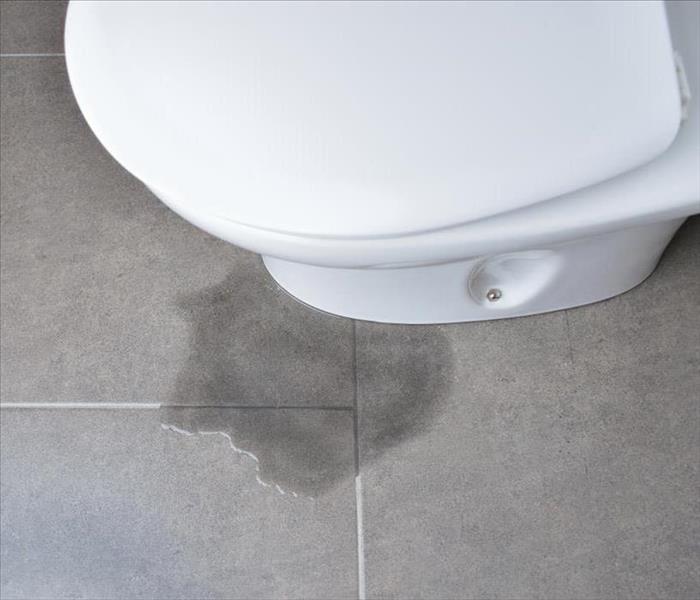 Leaking toilet in Murfreesboro, GA
Leaking toilet in Murfreesboro, GA
Several Types To Replace a Toilet
If you find a leaking toilet in your commercial restroom, you want to get it fixed as quickly as possible to avoid any further damage. Many things can cause a toilet to leak. Regardless of the cause, you may find that replacing a toilet is easier than you think. If you need a toilet repair in Murfreesboro, GA, there are several steps you can take to replace it.
1. Turn Off the Water
Be sure to turn off the shut off valve. It is usually located on the floor or wall behind the leaking toilet. If in doubt, you can turn off the water to the building. You need to drain and clean the water from the tank and bowl to avoid any spillover.
2. Remove the Toilet
By prying off the caps that cover the closet bolts and using a wrench to remove the hex nuts, you should be able to lift your old toilet off the ground. Be sure to place your hands around the bowl when lifting.
3. Clean the Area
Parts of the old wax gasket may still be attached to the closet flange. You may need to loosen the screws and install a repair strap underneath the closet flange. After tightening the screws, place the new wax gasket over the closet flange.
3. Install Your New Toilet
Connect the water supply to the bottom of the toilet tank and then center the toilet over the new gaskets. Press down on the toilet while tightening the closet bolts. You may need to repeat the pressing and tightening several times to get a secure fit. After replacing the caps, connect the supply tube and open the shutoff valve.
As a business owner with a leaking toilet, you may find that you have additional water damage or want someone to replace it for you. You can hire a professional water remediation company to clean, disinfect, and repair any water damage you may have sustained.
Commercial Insurance Coverage for Mold Damages
5/14/2020 (Permalink)
 Make sure you understand your commercial insurance coverage before you find mold
Make sure you understand your commercial insurance coverage before you find mold
Commercial Insurance Coverage for Mold Damages
Property owners' commercial insurance policies may have vague or complicated wording when they describe the coverage of mold damage. This being the case, it's sometimes difficult to understand when damage is covered by mold insurance and when it isn't. However, there are some general guidelines that may simplify the issue:
- Damage due to aging and wear and tear is usually not covered.
- When mold is the result of a covered type of damage, mold may be covered.
- Sudden damages, such as fire, may cause mold that your insurance will cover.
Most of the time, mold removal is covered when the source of the contamination is already covered by your commercial property owner's coverage. Sudden accidents may include burst pipes, overflows, fires, natural disasters, and so on.
Damages That Aren't Covered
If it's evident that you haven't kept up with maintenance and proper care for your building, related damages probably won't be covered. For example, if you notice drops of water gathering on a pipe, but you don't do anything about it, the resulting damages aren't covered by your commercial insurance. Regional flooding could lead to damages that aren't covered unless you've purchased flood insurance separately.
Coverage, Exclusions, and Exceptions
Commercial property and rental property insurance policies have several differences, so the best way to determine how much coverage you have available to pay mold cleanup and mitigation professionals is to talk with your insurance agent. Carefully read and understand your mold insurance policy, taking notice of terms such as "specified peril" and "exclusions." Some policies have long lists of exclusions, including corrosion and pollution. Sometimes, there are exceptions to exclusions.
Quick Action Prevents Spread
Ultimately, you need to take quick action when you discover mold damage. The best way to avoid further contamination is to hire Milton, TN, mold remediation professionals right away. Make sure you understand your commercial insurance coverage before you find mold.
The Cost of Mold Damage and Removal
3/27/2020 (Permalink)
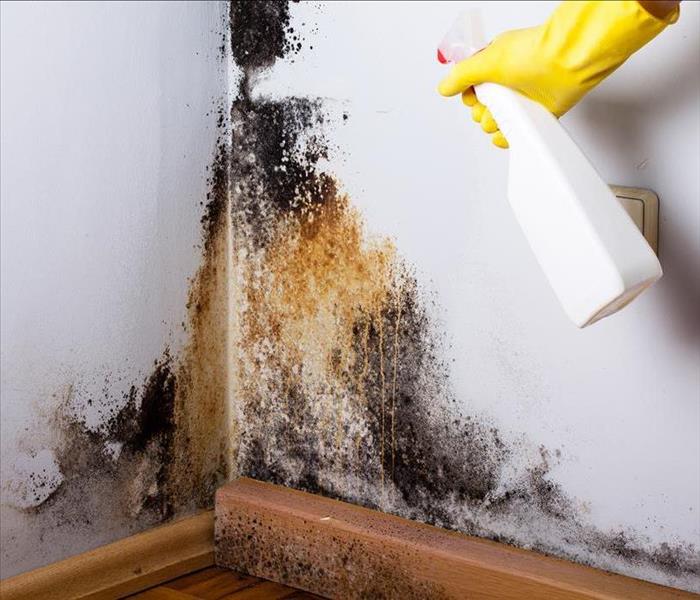 Mold removal in Eagleville, TN
Mold removal in Eagleville, TN
No homeowner in Eagleville, TN, wants to see mold on the premises. This can be a nightmare when it's time to sell or refinance. It's also unsettling to find no matter your living situation. It's nice to know that you can hire experienced technicians to handle the mold removal. Still, this will come at a cost to you, especially if your insurance doesn't cover the mold growth. Be prepared to know what you're up against.
Where You'll Usually Find Mold
Mold spores are in the air outside all around you, but if they make it into your home, mold can thrive under certain conditions. This growth occurs in humid, damp areas. Some of the most usual places to spot mold are:
- Basements, cellars, crawl spaces and attics
- Bathrooms, especially shower walls
- Under sinks and appliances where there has been water leakage
On the Low End
Mold removal costs can vary considerably depending on the extent of the damage and how long it has gone untreated. For a professional mold remediation company to remove a small patch of mold, you should expect to pay at least $500 or $15 to $20 a square foot. If you have damage to more than a couple of square feet, you should rely on the skills of a professional to handle it.
On the High End
If mold has infiltrated your home and covered widespread areas, you could be looking at thousands of dollars in damage. Black mold removal in extensive parts of the home could cost $5,000 or more.
What the Pros Do
A technician will inspect the area and evaluate what was damaged. Teams will tear out carpet, drywall and ceiling tiles, if necessary. Porous items may not be salvageable, but technicians can clean many places and items in your home with powerful chemicals and effective methods.
For mold removal, you can call a professional team to provide relief. Be ready for a possible significant financial commitment to get your home back in living condition.
A Moldy Affair: Mold Remediation
3/23/2020 (Permalink)
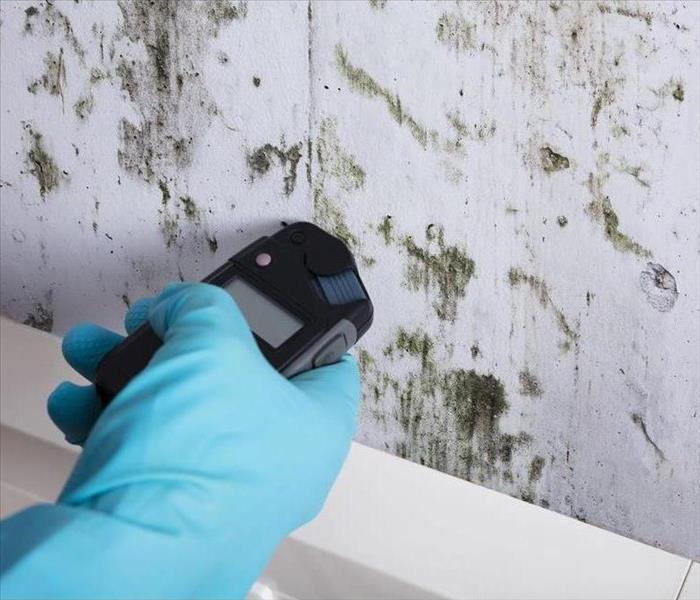 Mold can grow in as little as 48 hours after a water loss.
Mold can grow in as little as 48 hours after a water loss.
Keeping a functioning and safe home is no small task.
Whether your household is comprised of just you and Fido, or if it’s you, your spouse, your children and Fido – it’s still your home.
It’s safe to say that no matter what your home is like, it’s something special to you and your family.
You’ve put in a great deal of time picking out furniture, putting up pictures, and adding all those little details that represent your family.
The ultimate goal as a homeowner is to keep a safe, secure, and happy environment for everyone who enters your home.
However, mold is the uninvited houseguest you probably never anticipated.
Mold is a common issue which almost everyone will come across at some point during their life. Unfortunately, it’s something that can easily occur in your home and it can lead to some very costly repairs.
At SERVPRO, we’ve seen our share of mold related cases throughout our time servicing the community of Smyrna in Rutherford County.
Part of our professional charge is to make sure you know how mold occurs. With the right information, you can take action to prevent mold in your home. And, you’ll know what to do in the event that you’re in need of mold remediation.
Here’s a quick look into how mold can occur in your home and how it can be prevented.
Mold Loves Moisture and Warmth
Mold has got to be the common cold equivalent of issues facing homeowners.
It’s as easy to overlook as it is to facilitate its spread throughout your house. Additionally, it can be just as simple to prevent it.
There are many common causes of mold in homes that can be provoked with a variety of situations. Something as seemingly nonthreatening as a pipe leak can lead to large mold issues in the future.
Flooding and heavy rains can also cause anywhere from minimal to extensive water damage, which all can mark the beginnings of mold.
No matter what the scenario is, the causes of mold in homes will always have moisture involved. Mold occurs when unchecked moisture meets warm climates. This can be particularly troublesome during summer months or in humid climates where mold has the chance to thrive.
Mold eats through any organic material as long as conditions for its growth are present. This means that what could have been remedied by a simple call to a plumber results in mold spreading through your walls, carpet, and ceilings.
Leaky pipes are issues you can easily check for to prevent mold from ever starting to spread. But less known or hidden water damage can be much more difficult to catch. Be sure to check any spaces where you have appliances, to see if there are any leaks.
Also, if there has been any significant rainfall during a storm, it’s a good idea to check your home. Leaks through your roof are a prime area for mold growth given the combination of continued rainfall and summer heat.
Mold Remediation Services at SERVPRO
If mold has already taken root or spread throughout your home, there are services which can solve this. Mold remediation is a professional service where mold is cleaned and removed from your home.
While a mold problem is something you may initially notice on your own, it’s best to bring in a professional to make sure a full assessment is done on the situation.
A professional will uncover not only what the causes of the mold are, but they’ll also be able to discover how extensive the mold damage to your home actually is.
In addition to offering services to stop the source of the problem, mold remediation is the ideal solution for cases where mold has damaged your home. These services also include cleaning and removing the mold-compromised zones using special chemical applications and methods to make sure mold doesn’t return.
Keep Your Home Mold-Free
Keeping your home mold-free should be on your list of routine checkups.
As simple as a routine home check could have already prevented mold growth and extensive damage, but it’s one of those things that can be easily overlooked. Mold could be spreading in all the moist, dark corners of your basement that you rarely check.
In the event that mold and mold damage can get out of hand, SERVPRO is your local source for mold remediation services.
Commercial Mold Remediation: A Professional Touch
3/18/2020 (Permalink)
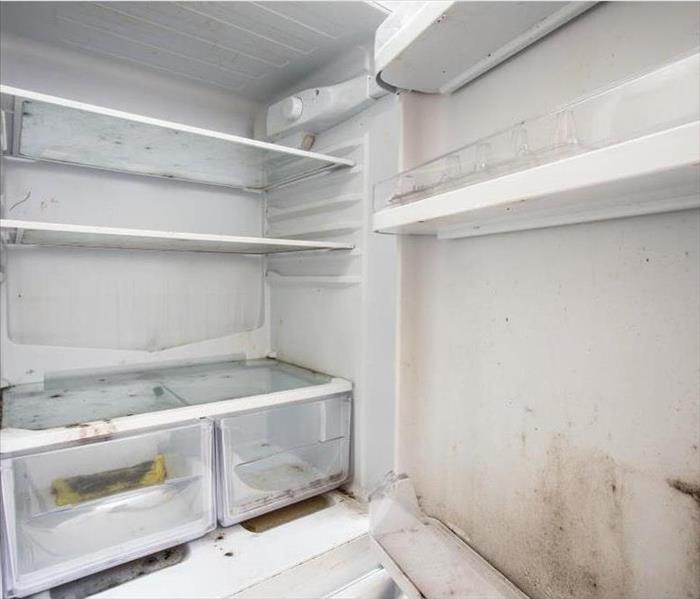 Mold can be extremely dangerous
Mold can be extremely dangerous
Brick and mortar storefronts are a staple of our economy, allowing for local customers to walk in the front door of a neighborhood business for goods or services.
There is great value in being able to have contact with a friendly face in an environment where you have confidence in the employees, and a general sense of trust that they have your best interests at heart.
As a business owner, you’re aware that there are many challenges to be tackled on a daily basis. The last thing you need is a problem to disrupt your work, especially in relation to your place of business.
A common workplace threat that falls under our area of expertise is the potential for mold growth in commercial spaces.
Perhaps you’re familiar with mold issues at home, but your business can be just as at risk. Understanding how to remedy this is important, not just to your customers, but to your livelihood as well.
Commercial mold remediation is a service that SERVPRO is happy to provide to the businesses in Murfreesboro, Rutherford County. It’s just as important for you to know what causes mold as it is to have professional input on any remediation needs.
In this blog, we’ll discuss both how mold growth begins, and also, how mold remediation services can combat potential damage.
How Exactly Does Mold Occur?
Mold growth happens when there is a perfect mixture of conditions – and unfortunately, it can happen far too easily.
All it takes is a combination of moisture, warmth, and in applicable situations, food – and you could have a serious mold issue in your hands.
Mold in your business will most likely occur in places like bathrooms, basements, kitchens, or anywhere else where there is some kind of moisture.
For example, if an unchecked pipe leak teams up with the summer heat, you could be in for an ugly surprise.
What is Mold Remediation?
Perhaps you’ve already seen mold in your place of business and that’s why you’re here.
Mold remediation is a key service which, when done professionally, can have your business mold-free in no time. This service basically involves cleaning, thorough removal, and mold treatment done throughout your building.
Mold tends to spread if its conditions for growth go untreated. In most extensive cases, mold can even grow quickly through multiple areas – including walls, carpets, and ceilings.
Commercial mold remediation will use special methods, chemicals, and cleaners to remove all mold present and to prevent it from returning.
A Mold Threat in Commercial Buildings
Mold is an issue that can threaten multiple parts of your business, so it’s important to know exactly how to approach it.
It’s vital to bring in a specialist to first asses your mold situation.
Mold is a natural organism which forms whenever the proper conditions are available. While you may initially only notice it in one spot, it’s very common to find that the small damage you’ve identified is just the beginning.
Examining the area with just your eyes may not show the more extensive growth which has spread throughout your building. A professional assessment will take a true account of the areas that have been affected and they will also let you know what needs to be removed or replaced.
A professional assessment will also investigate where the source of the mold is coming from. This is essential because replacing the walls and carpets could be a complete waste if you don’t find the source of the mold.
Getting commercial mold remediation for your business is a sure way to not only eradicate the current issue, but also, to take the proper steps so it doesn’t happen again.
Call the Professionals Every Time
Mold is one of those issues which, when it strikes, can become a huge inconvenience to you.
The most extreme cases can result in the walls and floors of your business needing to be removed and this could require you to close for a period of time.
Taking pride in serving communities, SERVPRO ensures that your mold remediation work is handled promptly and professionally.
If you’ve noticed any current mold issues, or if you have any general questions about how you can keep your business mold free, SERVPRO professionals are here to make sure your business is mold-free, so you can focus on doing what you love instead.
Mold Remediation: Top Signs and Causes of Mold Infestation in Homes
3/11/2020 (Permalink)
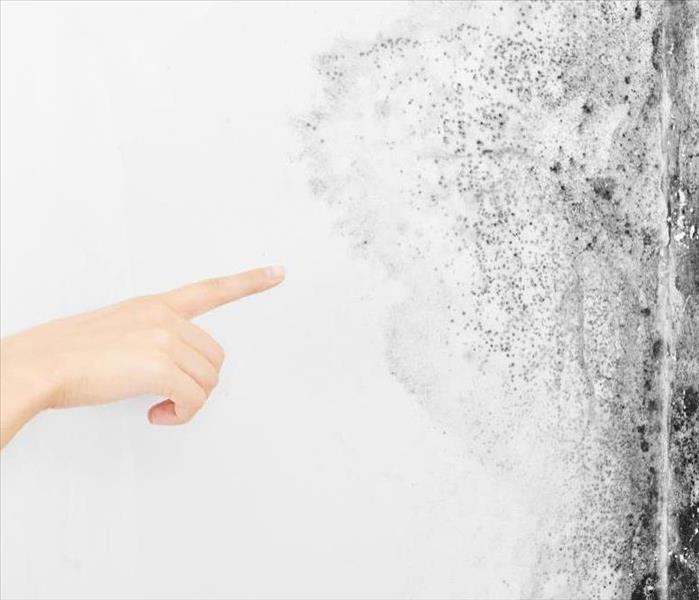 If you find mold, call us immediately.
If you find mold, call us immediately.
Mold growth is more common in homes located in flood-prone areas, but it can occur in any home. It looks unsightly, but can also cause major structural damage if left unattended for a long time.
The best way to deal with infestation of this annoying fungus is to be proactive. Being proactive here means you should know the signs and causes mold growth, so you can address the problem immediately and stop it in its tracks.
How to Tell if There is a Mold Problem in Your Home
If you notice any of the following signs in your home, you could be having a mold problem:
- Can you see colored, flat spots or fluffy patches forming on the walls, ceilings or floors of your dwelling?
- Do you notice a pungent or musty odor when you enter your house?
- Can you see water stains on your walls, ceilings, floors and other surfaces?
- Is the paint on the interior surfaces of your abode coming or peeling off?
- Do you have rusty water pipes in your abode?
If the answer to one or more of these questions is a resounding yes, you might have a mold problem in your home.
4 Common Causes of Mold Infestation in Homes
Mold thrives in areas that stay wet, and none will grow on surfaces without direct exposure to oxygen. Besides flooding, there are many other potential water or moisture sources that could encourage its growth within a home.
Continue reading on below to find out a few “typical” culprits behind mold growth and damage in homes.
1. Leaky Water Pipes
Every home requires a consistent supply of clean water for drinking, cooking, cleaning dirty dishes, bathing, doing laundry, and more. Surviving a day without running water is almost unimaginable.
The water connection to your abode comprises a series of water pipes that deliver water to the various faucets or points of use within the home.
When you have a dripping water pipe, you may experience a considerable decline in water pressure, depending on how big or small the leak is. But that is not the only thing that should worry you.
The water leakage may encourage mold infestation, especially if it’s hidden and goes unnoticed for a long time. Leaks that occur underneath sinks installed on bathroom vanities are a perfect example of leaks that may take time to detect.
Once you have called in an emergency plumber to stop the leakage, you should immediately contact a remediation specialist to inspect the affected area for mold growth and determine the extent of damage caused by the mold.
2. Leaky Roofs
Like dripping water pipes, leaky roofs are another common cause of mold damage. Mold growth from roof leaks typically happens during the rainy spell when rainwater runs off the rooftop.
The presence of water stains on your ceiling or interior walls is a tell-tale sign of a leak from above. A roof repair specialist can fix the leaks for you, but they may not have the expertise and experience required to inspect your roof and home for mold damage.
You will need to enlist the services of a water and mold damage professional to protect your family from mold exposure and growth in your home.
3. Hot Showers
Bathrooms are by design wet areas, but are you aware that those long, foggy hot showers you like taking every day could increase the risk of mold growth?
Hot showers cause moisture-heavy air, called condensation, to build up on your bathroom surfaces. This, in turn, encourages mold growth in your bathroom.
To minimize condensation and prevent this growth in your bathroom, you should consider leaving your bathroom windows open when taking hot showers.
When opened, your bathroom windows will allow excess moisture to exit the room to the outdoors. To facilitate quicker expulsion of excess moisture from your bathroom, you should consider installing a ventilator fan.
4. Drafty Doors and Windows
Doors and windows that leak out air are a leading source of energy inefficiency in homes, but they could also promote mold growth by leaking in water from outside when it rains.
Luckily, all you may need to do to remedy the problem is to replace the caulking or weather-stripping around the window.
If you suspect that your house has suffered mold damage, it is best to contact a remediation expert immediately. This will ensure prompt removal as well as prevention of further damage.
Contact SERVPRO for Help
Mold spreads fast, so any sign of growth requires prompt intervention. If you have an infestation in your Murfreesboro home, don’t hesitate to turn to the seasoned remediation specialists at SERVPRO for help.
3 Common Causes of Mold Damage in Your Home
2/21/2020 (Permalink)
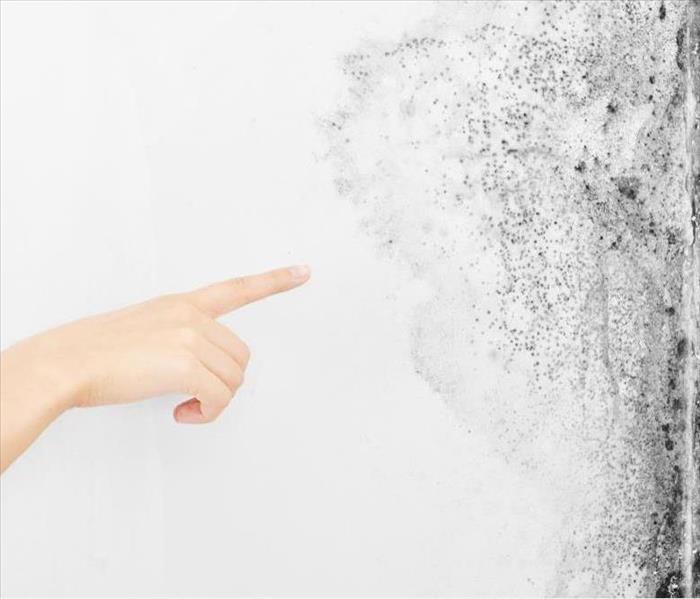 Mold can spread very easily in your home
Mold can spread very easily in your home
Your home has mold.
But don’t get alarmed (yet) – mold is a naturally occurring fungi that lives in all environments. The Environmental Protection Agency (EPA) says it’s impossible to eliminate all mold and spores from your house.
However, if conditions in your home are right, those fungi can spread and cause mold damage and big problems.
Stop Mold Damage Before It Starts
Mold grows best in damp, hot, and humid places. So the best way to control mold is to control the moisture in your home. Here are three common causes of mold damage in your house that you need to know about.
1. Leaky Pipes or Roofs Cause Mold Damage
One of the most common causes of mold damage is from leaks. Leaks create areas of standing water where mold colonies can grow. Call a plumber or replace any leaky pipes. Also note any discoloration on your ceiling, which can be a sign of water damage from a leaky roof or a leaky pipe in the room above. Remember, the source of these leaks must be fixed before any mold remediation can occur or the problem will continue.
2. Humidity Causes Mold Damage
The Tennessee Department of Health recommends the humidity in your home be set between 30 and 50 percent to prevent mold damage. Some thermostats have a setting which allows you to control the humidity level. This is important to note, especially during the hot and humid summer months here in Rutherford County.
If your thermostat doesn’t give you this option, think about using a dehumidifier. The most economic units will run between 50 and a few hundred dollars, but this is a small investment considering the potential costs associated with mold remediation.
3. Poor Ventilation Causes Mold Damage
Ventilation helps reduce the heat and humidity from areas with a lot of moisture – specifically kitchens, laundry rooms, and bathrooms. Check that your exhaust is not blocked and is venting all of your heat and humidity outside. Ensure exhaust fans are working properly over cooking surfaces and in your bathroom. It’s also smart to crack open a window while showering to help reduce the humidity in the room.
How to Get Rid of Your Mold
If you spot mold damage in your house, you need to act fast. And the highly trained mold remediation specialists at SERVPRO in Rutherford County are on call 24/7 – ready to assist in your emergency needs. Our team will help find the source of your problem and suggest services that are right for your home and budget.
Contact SERVPRO in Rutherford County at (615) 849-9794 to schedule your appointment today.
4 of the Best Carpet types for Middle Tennessee Weather
2/20/2020 (Permalink)
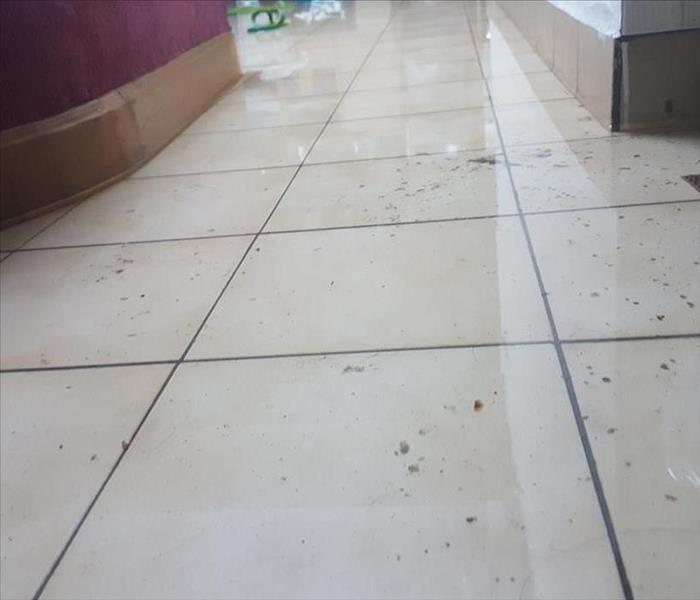 SERVPRO can handle all your cleaning needs
SERVPRO can handle all your cleaning needs
4 of the Best Carpet types for Middle Tennessee Weather
There are many reasons why carpet is so popular. People often choose carpet as the go to floor covering because of its warmth and versatility. Others like it because of insulation, safety, noise reduction, durability, and ease of maintenance. Carpets are an affordable way to make a room feel cozy while also adding to the "coziness" of a room. Modern carpets are available in a variety of colors and patterns. They can fit in well with contemporary or traditional décor, and each room can reflect its own personal style. Carpet can also be chosen to reflect the weather conditions for that area.
Best Cleaning Methods for Carpet Material
Let's think of carpets according to their construction. The four main carpet types are loop, texture, twist, and shag. Level loops have short loops and multi-level loops offer a patterned texture. In a cut pile carpet, the loops are cut, leaving a soft smooth texture. There are some carpets that use both methods called the cut and loop. The fibers can be natural or synthetic. The type of fiber is what determines how it should be cleaned. Nylon and olefin are durable and are good choices for homes that are located in areas where inclement weather is the norm. Wool and acrylic wear well, but special care is imperative when cleaning. The SERVPRO Rutherford County experts know the right techniques to use for each carpet type.
Weather Affects Carpet Cleaning
Carpets made from synthetic fibers are best used where the humidity and moisture is high. Fibers such as olefin, polyester, nylon, or the relatively new triexta, resist the growth of mold and mildew. Carpets made from synthetic materials are easier to clean because they dry faster than those made from natural fibers. Snow and rainy weather conditions are hard on carpets because of the moisture brought in on shoes. Under these adverse conditions, the carpets may require more cleanings throughout the year to keep them looking pristine.
Cleaning Protects Investment
Carpet is an investment for the home and its residents. Keeping your carpets cleaned and fresh makes it feel homey and comfortable. Middle Tennessee weather can be difficult to deal with, but the experts at SERVPRO Rutherford County know how to keep your carpets clean. Their professional cleaning services remove dirt and grime from carpet using state-of-the-art equipment. They know what type of cleaning method to use for each carpet type and can recommend ways to keep it clean during the hot humid summer months or the cold days of winter. If it's been some time since your carpet was professionally cleaned, you should give us a call!




 24/7 Emergency Service
24/7 Emergency Service
















